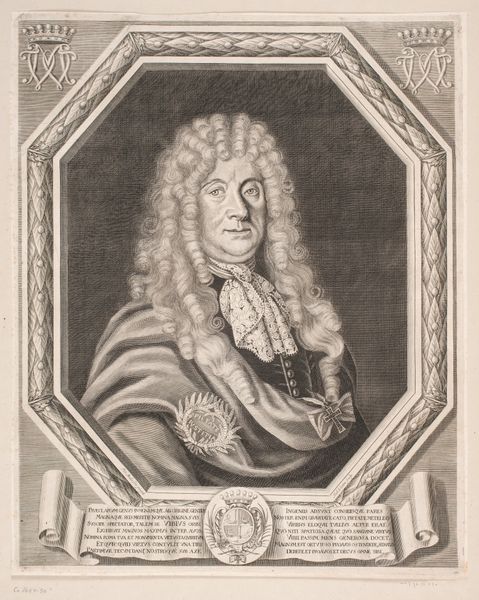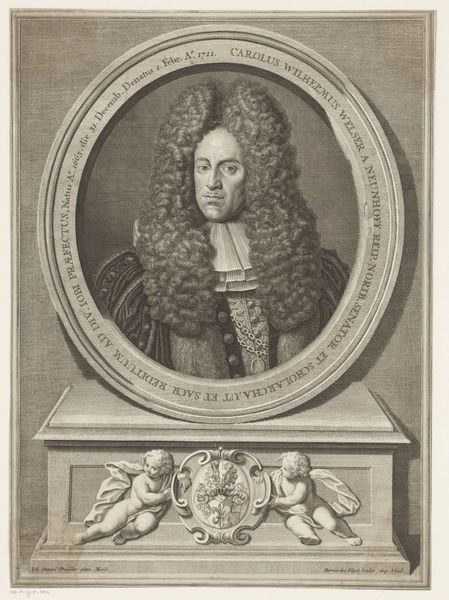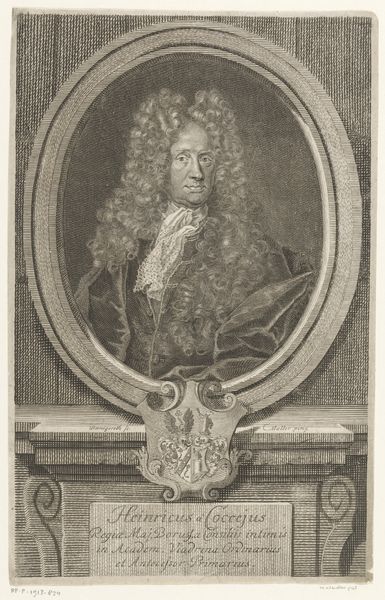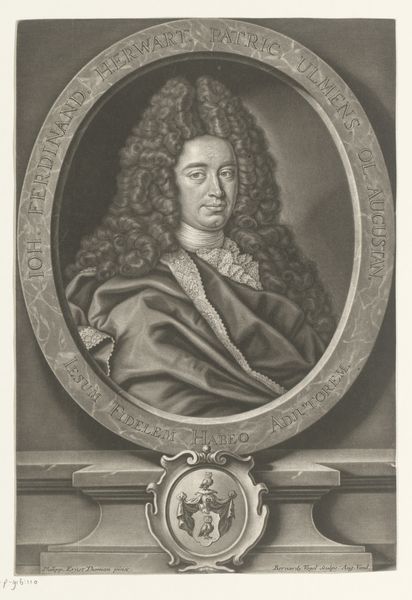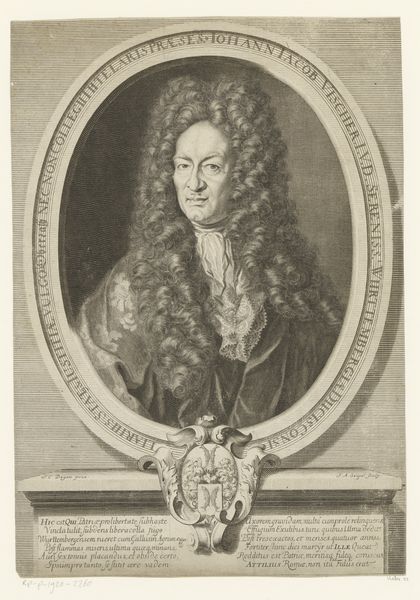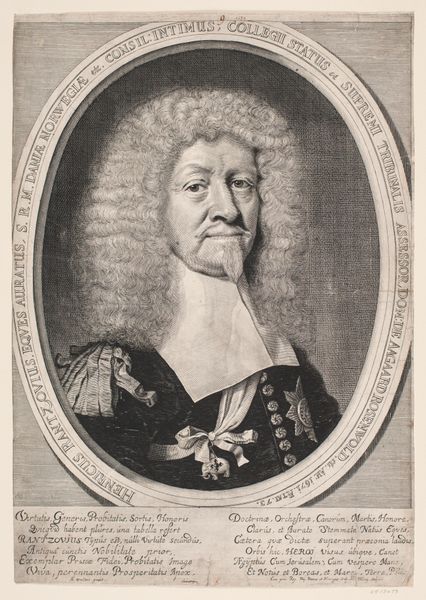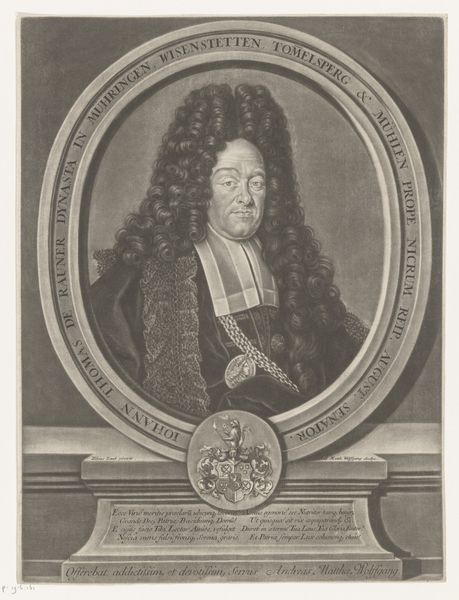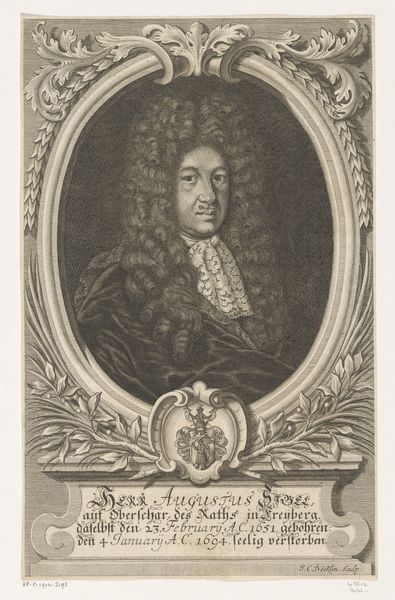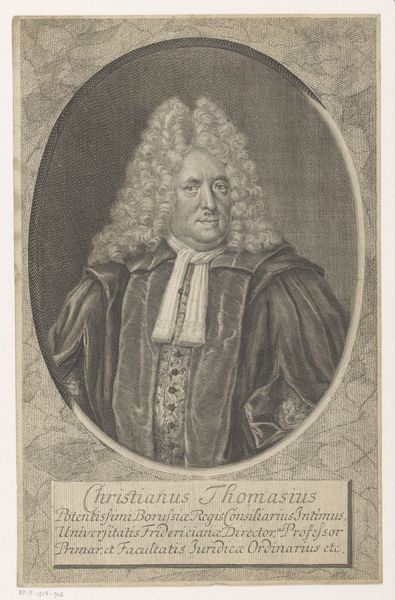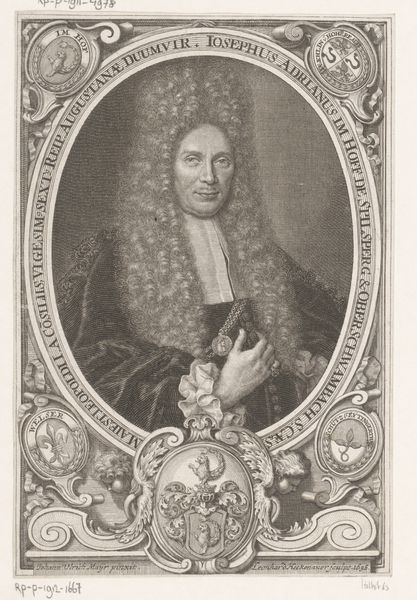
engraving
#
decorative element
#
baroque
#
old engraving style
#
form
#
line
#
history-painting
#
academic-art
#
engraving
Dimensions: height 196 mm, width 131 mm
Copyright: Rijks Museum: Open Domain
Editor: Here we have "Portret van Octavian Langenmantel," an engraving made in 1720 by Andreas Matthäus Wolfgang. The intricate linework really grabs your attention. The whole thing seems so official and staged. What strikes you most about it? Curator: Well, seeing this through a historical lens, I am immediately drawn to the elaborate framing and inscription surrounding Langenmantel’s portrait. These weren't just decorative; they were powerful tools for constructing and disseminating identity in the 18th century. The symbols included – coats of arms, titles, and the like – reinforce his status. The museum becomes another stage to showcase such social standing. Editor: So, the frame isn't just a frame, it's part of the message? What was the purpose of imagery in this specific historical period? Curator: Absolutely. Consider how printed portraits circulated widely, reaching audiences far beyond the elite circles who commissioned them. This engraving plays a part in the public performance of power. Did having your portrait created reinforce and reflect or challenge your personal status? How might Langenmantel, as the subject, have collaborated with Wolfgang, as the engraver, to construct a carefully curated image? It also raises questions: who gets remembered, and how are they remembered? Editor: It’s fascinating how much information can be packed into an image. Now, it seems like a very intricate yet controlled visual strategy. Curator: Precisely. And how this reflects society's values. The composition and symbolism also shaped popular perceptions and played a role in solidifying social hierarchies. Editor: That's helped me appreciate how deeply embedded socio-political forces are within seemingly straightforward portraits. It is definitely more than just a depiction. Curator: Indeed. Understanding the visual strategies and cultural context brings a much deeper meaning and importance to what the work is portraying.
Comments
No comments
Be the first to comment and join the conversation on the ultimate creative platform.


